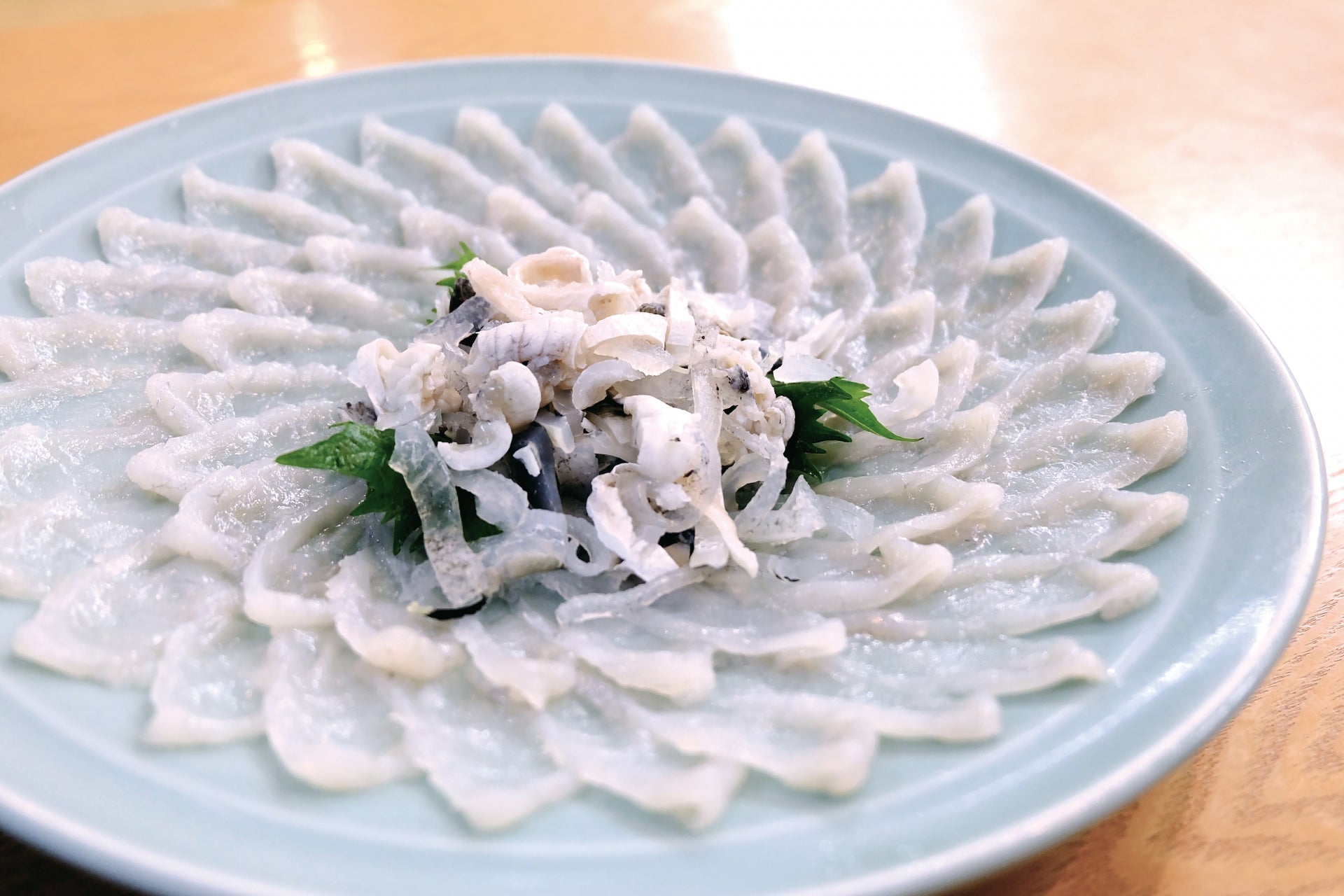Traditional Japanese food, known as washoku, is one of the most diverse and fascinating world cuisines. This seasonally-sensitive cuisine developed over centuries on a small island in Asia called Japan is now celebrated on the global gourmet scene for its inventiveness, healthiness, and heritage. Once you scratch the surface of authentic Japanese food, you’ll find a wealth of dishes you might never have heard of before.

Japanese cuisine is now world-famous, but there is so much food in Japan to try besides sushi and yakitori. Yet Japanese food culture is much richer than those so I will share what food in Japan should be in your bucket list especially in winter while you are visiting Japan.
Fugu(河豚

The dreaded puffer fish or fugu fish known to contain a poisonous toxin that can lead to paralyzation and even death is one of the most expensive and dignified dishes in Japan. You may fear that you would be a victim despite the strict regulations placed on serving fugu fish and the fact that according to the Tokyo Bureau of Social Welfare and Public Health, there are less than 6 deaths per year from eating fugu fishs. And most of them were from eating fugu that was caught and eaten privately rather than at a restaurant. The chefs who cut and serve the fugu also must earn a license and do a 3-year apprenticeship to be allowed to serve fugu to customers.
The history of eating fugu in Japan dates back to the 17th century. Fugu was particularly popular among royalty and wealthy merchants because it could be served at a higher temperature than other seafood dishes. Most fugu fish contain tetrodotoxin, which is an extreme poison and it can be found mainly in the liver, ovaries, and intestines of a fugu fish. If you are brave enough to try fugu fish, then these dishes will surely blow your mind!!

We eat fugu fish as sashimi with ponzu, lightly boiled fugu skin, hot pot, deep fried, grilled, fugu soft roe, and my favorite one will be fugu-hire(fugu-fins). They are dried, lightly roasted, and put in sake to make Hirezake. Would you like to try some hot sake with this beautiful sake decanter?
Would you like to try some hot sake with this beautiful sake decanter?
Lake Biwa near Kyoto, largest lake in Japan
Shiga is so closely associated with the famous Lake Biwa that the lake is synonymous with the prefecture. It takes up 1/6 of the area of the prefecture, with a lakeshore 235 kilometers long. It plays an important role as the source of water for 14 million people not only in Shiga, but also in other prefectures in the Kansai area, such as Osaka, Hyogo, and Kyoto. Today, Lake Biwa supplies water to more than 99% of the population in Kyoto. Among these, there are unique kinds of fish that live only in Lake Biwa.
The Lake Biwa Canal carries Lake Biwa’s abundantly flowing water to Kyoto.The canal consists mainly of three parts that branch off from the Canal at a point near Keage and was completed in the Meiji Era (1868-1912), “Lake Biwa Canal” is a man-made canal that is still in use today. (Rerce: Japan Heritage The Lake Biwa Canal)
Where is origin of Sushi? 
Today, sushi is one of Japan's most well-known traditional cuisines, whose combination of vinegar rice and fresh fish has captivated the hearts of foodies worldwide. Many types of sushi are served at a variety of restaurants, at a wide price range from affordable ¥100 plates to artisanal craftsmanship. Among the many types of raw seafood dishes that you can find at a sushi restaurant. while Japan is certainly the sushi capital of the world, sushi traces its origins back to a Chinese dish called NAREZUSHI. This dish consisted of fermented rice and salted fish.
Funazushi (ふなずし) is known as the fermented predecessor of modern sushi. 
For the past 18 generations, one family has preserved a 400-year-old recipe showing how sushi once tasted, and it doesn't use raw seafood, but fish aged for three years. This dish consisted of fermented rice and salted fish. And, despite what you may think, it wasn’t fermented and salted for flavor. The dish’s earliest known origin was in the 2nd century BC.  https://store.kyotohandicraftcenter.com/products/js012?_pos=2&_sid=effd0dee0&_ss=r
https://store.kyotohandicraftcenter.com/products/js012?_pos=2&_sid=effd0dee0&_ss=r
Carp is the king of freshwater fish in Japan, with the most prized being Japanese crucian carp (nigorobuna), which is the original type of carp used to make funazushi and it is a wild, rich-tasting species that are found only in Lake Biwa, Japan's largest lake and one of the oldest lakes in the world.

